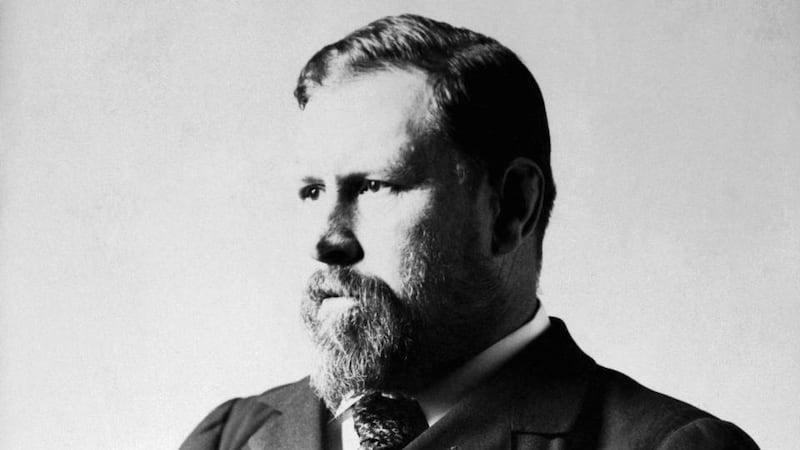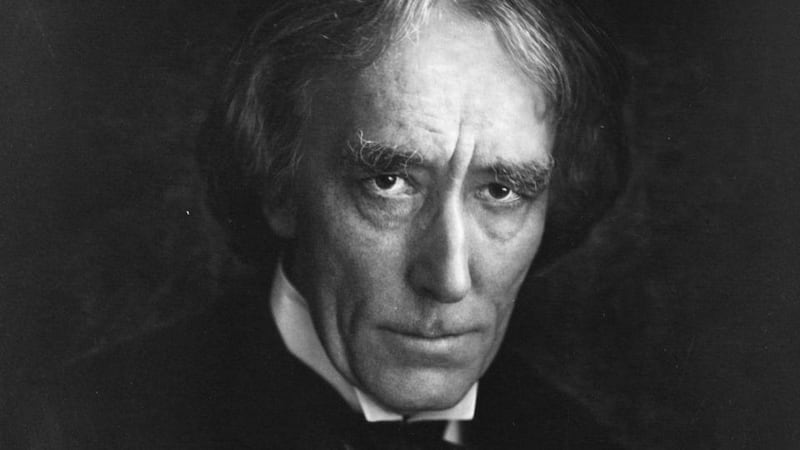As hallowed and unhallowed nights crop up in the calendar one’s hand turns instinctively to appropriate kinds of literature. At this time of year Dracula, and its numerous spawn, from Buffy to Rick Grimes, top the list.
Bram Stoker’s dark classic is the bestselling Irish novel ever put into print. Deservedly so: it’s a great book. And universal in its appeal. Every nation has its vampire legends. Even Ireland. The blogger Tarquin Blake points to Abhartach a dearg-diúlaí, or red-blood sucker, who sustained his life with the drinking of humanity’s second most precious fluid. I can’t quite see a novel there.
A few days ago a BBC producer doing a seasonal programme on Dracula asked me, as the nearest Professor Knowall, why Bram Stoker's subsequent fiction is all so fifth-rate. I muttered something about his turning to full-time writing in late life, years after his magnum opus, a sad period when he was impoverished and sick. Nonetheless I have a perverse soft spot for Arabella, the snake-fanged heroine of The Lair of the White Worm. She, like Dracula, has teeth to die for. And from. But the blunt fact is Stoker wrote nothing as good as Dracula after Dracula. It's enough.

Critics have done their dinger on "explaining" Dracula. When was it published? Eighteen ninety-seven. What other popular novel was published in the same 12 months? HG Wells's The War of the Worlds. What do those two perennially popular stories have in common? Phobia about aliens, whether toothy Transylvanians or slimy jelloids. England was, in the 1890s, in a moral panic about immigration, particularly incomers with strange accents. It led to the appalling Aliens Act of 1905.
There are biographical explanations for the happening of Dracula. Little Bram was bedridden with a mysterious ailment for the first seven years of his life. Put another way, he was longer than most children sucking at the mother's breast. Thereafter he grew strong, shining at Trinity College Dublin, in the debating hall, in the classroom and on the sports field.
Photographs confirm the grown Bram to have been strikingly handsome, the epitome of the manly “red Irishman”. From childhood he had been stage-struck. Henry Irving’s touring company played Dublin regularly in the mid-1870s. Stoker, a confirmed Irvingite, wrote an admiring review of the actor’s Hamlet, in 1878. It was well received. The young civil servant (as he then was) received a summons to Irving’s suite at the Shelbourne Hotel, where the two men talked until daybreak.


The next evening Stoker was informed that the great man had a "special gift" for him. It turned out to be a recitation of Thomas Hood's melodramatic poem The Dream of Eugene Aram. At the end of his performance Irving tore off his necktie and collapsed in a swoon. "The recitation was different, both in kind and degree, from anything I ever heard," Stoker recalled. His own response he described as hysterical. One doesn't need queer theory to elaborate.
Irving impulsively appointed Stoker his “stage manager” (his Renfield, as unkind commentators jest). Bram’s father was horrified. Was there, commentators have wondered, seduction of some kind? Stoker was a confessed Whitmanite. On American theatrical tours he made a point of throwing himself at the feet of the great poet. Whitman’s “inversion” was an open secret.
Stoker was, of course, married to the wispily beautiful Florence Balcombe. He had won her from Oscar Wilde. Bram had the better gnashers. Oscar’s set Florence reportedly found off-puttingly “curly”.
This touches on what film versions of Dracula, and the novel itself, find a tricky subject. I read somewhere that Christopher Lee, who played Dracula nine times, declined to give male victims the trademark love bite. (Harker spends weeks in Castle Dracula unbitten by his host.) Is Count Dracula straight, gay or bi?
I’ve always enjoyed such unanswerable things in literature – from bedtime reading as a child. Why do Jack and Jill go up the hill to get a pail of water? You don’t expect kids to be up with hydrodynamics, but they surely know water is found at the bottom of the hill.
Four of my puzzle books are published this month, all about things I don't know, or can only ingeniously hypothesise: Is Heathcliff a Murderer? (probably yes), Can Jane Eyre Be Happy? (probably no), The Brontësaurus (lots of puzzles in that writing family) and Who Is Dracula's Father?
Is Dracula a revived corpse or a live human who has found the elixir of life? Is he resurrected? Does he represent an evolutionary leap in the human species?
So who, then, was Dracula’s father? From a boastful hint given by the count himself, it was Attila the Hun, 600 years earlier. He died choking on blood, legend has it. That fits – but that ancestry would make Dracula Hungarian (not Transylvanian), just like, as it oddly happens, the film actor who played him most famously, Bela Lugosi. I hear at this moment in my mind’s ear Lugosi’s spine-chilling “I velcomm you to my house, Meester Harker.” An ear worm.
More on worms. Stoker's name for the novel, over the years he worked on it, was The Undead.
Is Dracula a revived corpse (like his victims) or a live human who has found the elixir of life? Is he, pardon the word, “resurrected”? Does he represent an evolutionary leap in the human species?
I describe Dracula as Ireland's bestselling novel. But there are no Irishmen or Irishwomen in the dramatis personae. Dracula is whatever he is – but not Irish. The gasbag Van Helsing is Dutch (but swears in German – I have a little puzzle on that). The young women on whose necks Dracula feasts are English roses, Quincey P Morris is American (and quite likely a covert vampire, in my view; another puzzle), Jonathan Harker has a good Yorkshire name, Renfield is, one suspects, German.
But if Stoker forgot Ireland, his country has not forgotten him. Dublin, I observe, has Bram Stoker's Castle Dracula, which advertises itself full-bloodedly as the city's most exciting and unique Irish attraction. Velcomm!
John Sutherland is Lord Northcliffe professor emeritus at University College London. The four literary-puzzle books he mentions are published by Icon Books

















